The Overwatch 2 beta continues to flex its muscles on Twitch, hitting a staggering new peak for the game.
Overwatch 2 's beta crushed its previous record (set yesterday around 500k viewers) with the new high this afternoon shattering 1M for the first time. Leaving its own records in the dust isn't a huge surprise. While Overwatch has maintained a dedicated playerbase despite two years without much content, it's not exactly setting the gaming world alight. Even more important to the breakneck pace is the fact that you can earn access to the Overwatch 2 beta by watching enough of certain streamers.
Other big fish in the pond, like Valorant, have come to fill the hole left by Overwatch, and so Blizzard is putting it in front of as many peoples faces as possible. By creating an opportunity to access the Overwatch 2 beta by viewing streams, it's got a shot at creating a temporarily captive audience to give a second (or first) look.
The list of Twitch streamers involved in the promotion includes former Overwatch pros A_Seagull and xQc who are currently pulling in over 100k viewers each. As it snowballs, other big variety streamers will jump in, and pull their own audiences along for the ride.
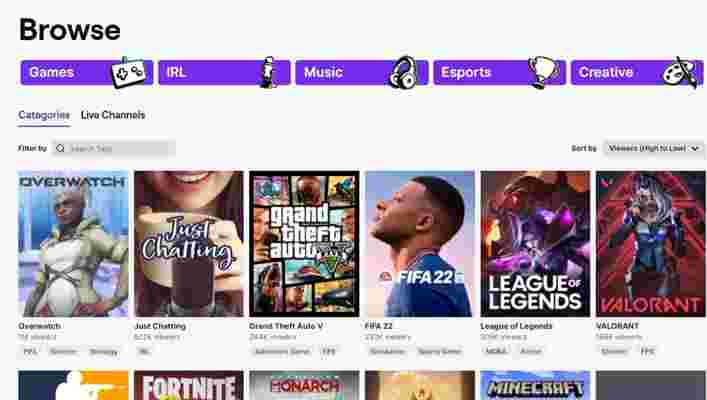
The beta will be around for a while yet, only ending on May 17, so Overwatch 2 will have a chance to break its own records again. The main question is: how much will the viewership fall off after the beta access program ends? It's difficult to imagine that these huge numbers will continue, but they won't disappear either. With the surge in interest, streamers will continue to play, and viewers will pick up on that.
Of course, Warzone also has a shot to steal a fair amount of Overwatch 2's thunder. Warzone season 3 was unleashed today – just a day after the Overwatch 2 beta, and it's viewercount is on the rise.
My bets are on Overwatch 2 to win the dust-up between the two, but time will tell.
Nintendo might be younger than it claims to be - or much older
On September 23, 1889, so the story goes, Fusajiro Yamauchi founded a playing card-making company called Nintendo. From these humble origins as one of more than 30 playing card wholesalers based in the Shomendori/Takasegawa neighborhood of Kyoto, the family-owned company would become the largest playing card maker in the country. Under the leadership of Fusajiro's great-grandson Hiroshi Yamauchi, Nintendo went after the emerging video game market, becoming the world-famous giant we know today.
In 1889, the telephone patent was two years old, Edison and Tesla's War of the Currents was still waging, and ocean-faring steamships were ushering in the first wave of globalization. The world was shrinking fast, and Japan had, at last, emerged from its feudal Edo period with the end of the Satsuma Rebellion 12 years prior. You know, the one Tom Cruise apparently played a crucial role in…
Nintendo opened its doors in a Japan that was entering the world stage as a European-style constitutional monarchy, one with a rich culture of printmaking and record-keeping rivaling those of the most advanced Western countries.
It is puzzling, then, that we know almost nothing about the early history of Nintendo, despite being one of the world's best-known companies. And, stranger still, what we think we know often can’t be confirmed by the documentary evidence – in fact, it’s frequently contradicted by it.
Was Nintendo really founded in 1889?
The claim that Nintendo was founded in 1889 by a 21-year-old Fusajiro Yamauchi has never really been in dispute. Nintendo itself lists the date on its website , and there is not a modern book on Nintendo that disagrees.
However, this date is likely wrong. In business directories from the Taisho and early Showa periods such as the Teikoku Shinyo-roku, the company's founding date is consistently given as 1892, some three years later than Nintendo's claim.
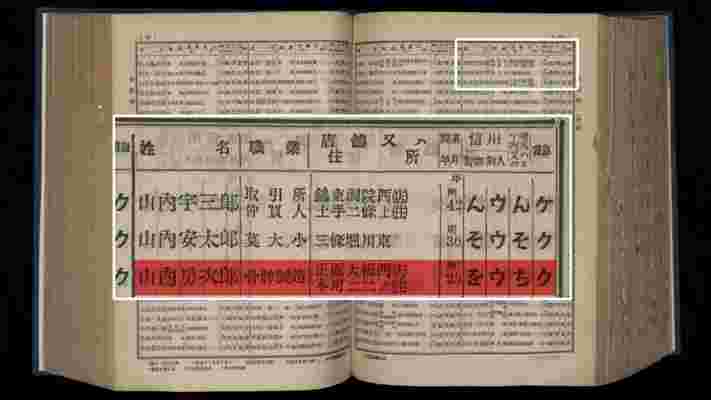
I've dug through hundreds of documents in Japan's National Diet Library, and the earliest mention of the 1889 date I found was a listing in the 1936 edition of the Teikoku Shinyo-roku for Sekiryo Yamauchi, Fusajiro's son-in-law/adopted son and the second head of Nintendo. From when Fusajiro was the head of the company, every earlier listing I’ve found lists the later date. The earliest record of Fusajiro Yamauchi I've seen at all is from 1895. And, unlike most other playing card manufacturers in town, he neglected to register any trademarks with the patent office until 1900.
Now, it’s not inconceivable that Sekiryo realized, perhaps through the unexpected unearthing of some old document or in a conversation with his now 68-year-old father-in-law, that Fusajiro had founded the company when he was 21 rather than 24. It seems more likely that Sekiryo simply misremembered the date when the editors of the directory reached out to him to double-check it, and then it stuck.
The Nintendo headquarters' photo
A critical and well-informed Nintendo fan may disagree with my claim, pointing to this photo as proof Nintendo existed in 1889:
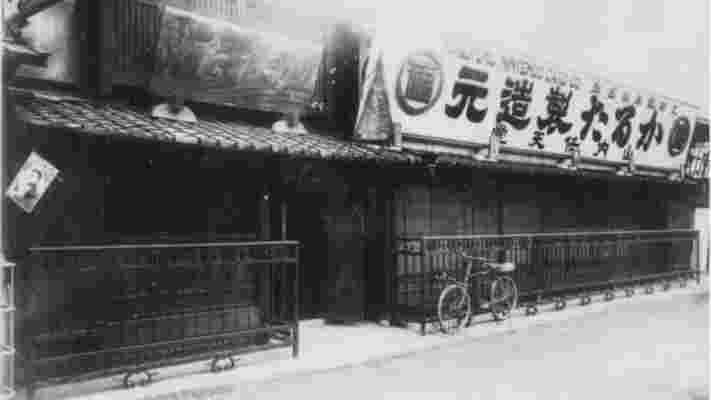
Back in 2017, a Japanese site managed by Kyoto city shared a photo saying it showed Nintendo's offices soon after the company opened its doors. The photo spread across the internet, with Nintendo fans sharing this immensely romantic photo, depicting a beautiful traditional Japanese building that would be right at home in a Studio Ghibli film.
Except it can’t possibly be from 1889, not according to Japanese bicycle historians Masayuki Hasebe and Yuki Ootsu: "If the photo had really been taken in 1889, that bicycle would have been a wooden penny-farthing," Ootsu told me. With a kickstand, inflatable tires, and a rear rack, a bicycle like that would come more than a decade later. Ootsu suspects the photo was actually taken between 1912 and 1930.
Nintendo under the shogunate
There's one more confusing twist to the story of Nintendo's origins. I’ve argued that the documentary evidence suggests Nintendo was founded in 1892, later than the popular history states, but there’s also evidence the company's roots might go as far back as the Edo period, when the shogunate still banned playing cards – a theory first told to me by fellow card researcher Hisashi Ishikawa.
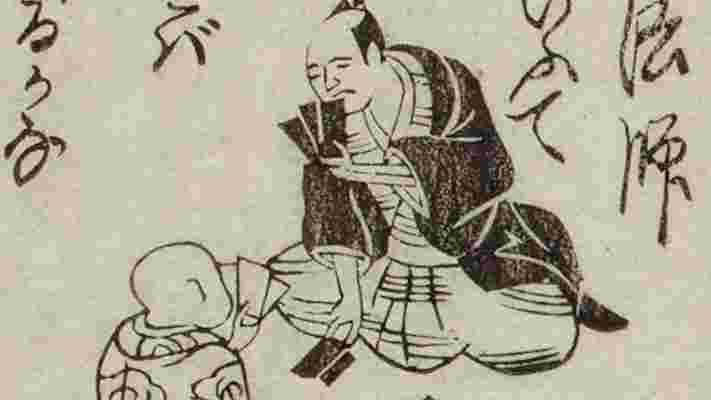
Fusajiro Yamauchi was not born a Yamauchi but a Fukui -- his birth father was a man named Sosuke Fukui, and the Yamauchi family adopted him at an early age. Almost nothing is known about the Fukui family, but on what is believed to be a late Edo-period playing card print made public by Dr. Takashi Ebashi , there is a logo showing the character for luck – ‘fuku’ (福) – in a circle. The same character is also used in the surname Fukui (福井). In a different playing card print from the mid-Meiji period, we see the same logo again, and on several other cards, there are what appear to be the initial Chinese characters used to write Sosuke Fukui's first and last names, ‘so’ (宗) and ‘fuku’ (福).
This type of logo has been common among Japanese shops and businesses ever since the Edo period. Usually, it consists of a kanji or kana character inside or underneath a specific geometric shape that you can read in a specific way. Kikkoman, the world-famous soy sauce maker, gets its name from its logo, the character "man" (萬) inside a hexagon shape known as ‘kikko’ in Japanese. Similarly, anything inside a circle is prefixed with "maru-", so the character ‘fuku’ inside a circle is commonly read as Marufuku. As the more die-hard Nintendo fan will know, this logo, albeit in a more stylized form, is still used by Nintendo today on its hanafuda cards.
The evidence isn’t definitive, but it seems likely Fusajiro's birth father made these two early card prints, and that the ‘fuku’ in the Marufuku logo Nintendo still uses today comes from the surname Fukui.
What's wrong with hanafuda?
One reason it’s hard to study Nintendo’s history is because of the card game that it was built on: hanafuda. While Nintendo is a notable playing card manufacturer, card historians in Japan have been largely focused on more respectable card games such as Hyakunin Isshu Karuta and Iroha Karuta, where Nintendo has always been a bit player.
You may wonder what’s wrong with hanafuda. The cards are beautiful, dainty objects, each illustrated with a scene depicting birds and flowers in what appears to be a quintessentially refined Japanese image. While this is all true, the cards have had an image problem for as long as Nintendo has existed because of the hanafuda’s strong association with illegal gambling.
Illegal and semi-legal gambling such as pachinko is, in turn, strongly associated with Japan's organized crime, the yakuza. The word ‘yakuza’ itself stems from a poor hand in hanafuda, 8-9-3 (though, strictly speaking, that's a hand from a related card game called oicho kabu). While Japan is moving towards introducing a casino monopoly, the preparatory committee went on record to say that under no circumstances will hanafuda be played at any of the three casinos built.
This potted history goes some way to explaining why Nintendo hasn’t been eager to embrace its past. Though, the plan to open a Nintendo museum south of Kyoto in 2024 suggests that it may be changing. And, with more of the many books and documents kept by Japan's National Diet Library getting digitized every year, there are likely more discoveries waiting around the corner.
Marcus Richert is a playing card researcher and an active member of the International Playing Card Society. He is currently Kickstarting a deck of handmade hanafuda cards together with Oishi Tengudo, the world's oldest still active playing card maker and perhaps Nintendo's oldest rival.
Psychonauts 2 creator Tim Schafer shoots down Warcraft remake
In the wake of Psychonauts 2 's acclaimed launch last year, Double Fine founder Tim Schafer has opened up about the future of the studio. He says it will focus on creating original games instead of working on established series, dismissing the idea it could revive a canceled Warcraft adventure game.
After accepting the Andrew Yoon Legend Award at this year's New York Game Awards, the game designer told IGN : “[Double Fine’s] first real big follow-up to a big story was Psychonauts 2."
"I think it leads me to want to do new, original stuff for the next phase," he added. "Coming up with new ideas is really where my head is at right now."
He went on to suggest that no IPs or franchises under Microsoft, Double Fine’s parent company, appeal to him. While it had been suggested that Microsoft’s recent proposed acquisition of Activision Blizzard could allow Double Fine to pick up the cult classic Warcraft Adventures: Lord of the Clans - a canceled point-and-click adventure game that was briefly in development before World of Warcraft was on the scene - Shafer doubled down on his commitment to originality.
“Brad Muir was suggesting that we take on Warcraft Adventures, you know the Full Throttle-era adventure game that [Blizzard] made, but no, we like to make up our own stuff at Double Fine, so they will not be handing us any IPs," he said.
Elsewhere in the interview , Schafer shot down the possibility of bringing Double Fine’s work to the big screen, saying he isn’t interested in seeing any of his video games adapted into TV shows or movies.
"We often get approached by people saying, 'Hey, can we turn this into a movie?' but, you know It’s usually just a distraction," Schafer said.
"I think games are what I really care about and what I like to make and what I think are interesting. It comes up every once and a while, but it’s never turned into anything. I’ve had a lot of free lunches out of Hollywood."
Analysis: a studio that could go anywhere
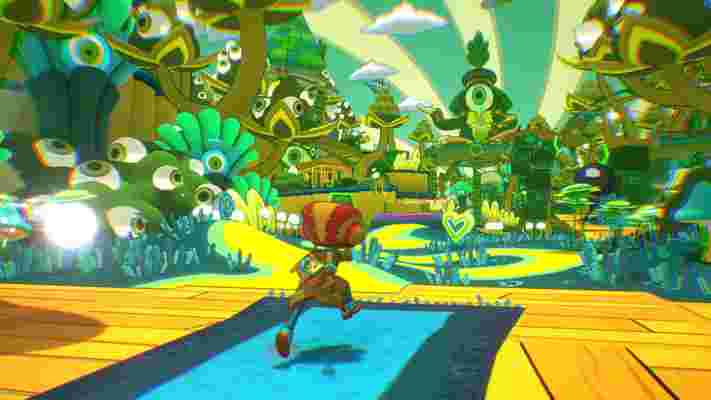
Double Fine has always been a studio that’s valued fresh ideas over tired repeats. The original Psychonauts, Brütal Legend, Costume Quest, and Stacking demonstrated the studio’s ambition for original ideas in their early years, and while there have been a few sequels here and there (Costume Quest 2 and Psychonauts 2) the studio’s output has kept to that practice.
Trying to anticipate what its next original title will work look like is near impossible, however, as Double Fine constantly flits between genres and styles. One moment it's making the narrative-focused point-and-click adventure Broken Age, and the next it's moved on to fantasy turn-based tactics strategy title Massive Chalice. While that creative freedom doesn’t always go to plan, with city-builder Spacebase DF-9 still sitting as one of the worst-reviewed games on steam , it does make for genuinely exciting releases that, like Psychonauts 2, have the possibility of dominating their genres.
On a sadder note, Schafer’s comments to IGN confirm the possibility of his creations making it to the big screen are all but nil. Last year, Warcraft director Duncan Jones revealed he’d written a script for classic LucasArts adventure game Full Throttle, which Schafer liked but wasn't convinced by.
“You could tell he really played the game and knows what it's all about,” he told IGN. “It would be fun to work with Duncan but, you know, L.A. and Hollywood, they are just a big whirlpool of lunches."